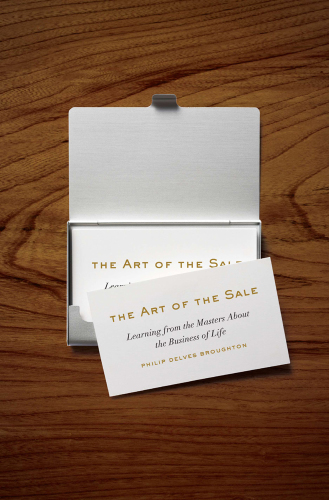
The Art of the Sale
Learning from the Masters About the Business of Life
کتاب های مرتبط
- اطلاعات
- نقد و بررسی
- دیدگاه کاربران
نقد و بررسی

January 16, 2012
Though we normally don’t think of Nelson Mandela as a salesman, persuading white South Africans to end apartheid was one of the great sales campaigns in recent history. Journalist Delves Broughton (Ahead of the Curve: Two Years at Harvard Business School) thinks salesmanship deserves more respect, though he freely admits that the few times he was called upon to sell, he hated it. Integral to any successful business, selling is seldom taught in business school, perhaps because M.B.A. programs prefer to paint a less brutal vision of business life. This exploration of the nature of salesmanship begins in Morocco, where Delves Broughton meets Majid, a world-renowned antiques dealer, who suggests that the art of the sale lies in patience and the ability to instantly read people. For infomercial-king Tony Sullivan, the art lies in the ability to tell an irresistible story, while Japan’s top life insurance salesperson, Mrs. Shibata, credits her conviction that she’s performing a valuable service. Like Malcolm Gladwell, Delves Broughton is drawn to success stories where natural talent takes second place to hard work, but he’s also willing to explore the manipulative, deceptive aspects of the task, as well as the endless rejection salespeople must face. His enthusiasm and admiration for skilled practitioners of the art is contagious.

February 15, 2012
Sales was not part of the curriculum at Harvard Business School. Former Daily Telegraph journalist Broughton (Ahead of the Curve: Two Years At Harvard Business School, 2008) explains why that's a big problem. For the author, sales is where the rubber hits the road, where the deals are done. If a business can't sell its product, of course, it won't survive. More Americans are employed in sales than any other line of work. Not to be confused with marketing, the author's definition of sales goes from his sons' lemonade stand to the Dalai Lama representing the Tibetan people against Chinese repression. Broughton has met with top sellers around the world, traveling to Japan, Morocco and the United Kingdom in search of the keys to success in sales. In addition to his interview research, he examines academic studies, history, self-help literature, academic research on the psychology of selling and the character attributes of sales people. He explores the differences in theory and practice, and he draws from the history of the field, by way of P.T. Barnum and Joseph Duveen, who brought fine-art sales to the U.S. Broughton does not exclude the seamy underside--e.g., pharmaceutical companies recruiting college cheerleaders to "sell" their products to the country's doctors, who "buy more and prescribe more to please ex-cheerleaders than they do for salesmen who look like themselves"--but he supplies plenty of success stories, including Ted Turner, casino magnate Steve Wynn and former AOL executive Ted Leonsis. Entertaining, balanced and provocative.
COPYRIGHT(2012) Kirkus Reviews, ALL RIGHTS RESERVED.

November 1, 2011
Delves Broughton's New York Times best seller, Ahead of the Curve, detailed his MBA studies at Harvard (after years as a journalist). Here he visits a merchant in Morocco, a Zen-inspired Japanese saleswoman, and art dealer Larry Gagosian, among others, to explain that we're all into sales--whether we're selling ourselves to a boss or our children on the virtues of homework--and how we can do a better job of it. Intriguing and possibly useful.
Copyright 2011 Library Journal, LLC Used with permission.

February 15, 2012
Unlike books that teach marketing principles and how to sell, this one focuses on the art rather than the science of selling. It's a loosely structured compilation of stories of how a variety of people in diverse industries, of various cultures, and with different educational backgrounds get customers to buy. Readers can learn proven sales techniques employed by some of the world's best salespeople, like the successful, self-taught Moroccan merchant Magid, who listens well and uses patience and psychology to assess customers and their motivations in order to close a sale. The message is this: there is no one right way to sell. From famous international infomercial pitchman Tony Sullivan, to Mrs. Shibata (top insurance salesperson at Japan's Dai-ichi Life), to the popular Dale Carnegie, to the unconventional sales trainer Jeffrey Gitomer, their unique personal styles and techniques are effective. Given that sales are such a vital function of business, Broughton highlights the absence of sales curricula at business schools and makes the case that sales education should be included in academia.(Reprinted with permission of Booklist, copyright 2012, American Library Association.)

























دیدگاه کاربران